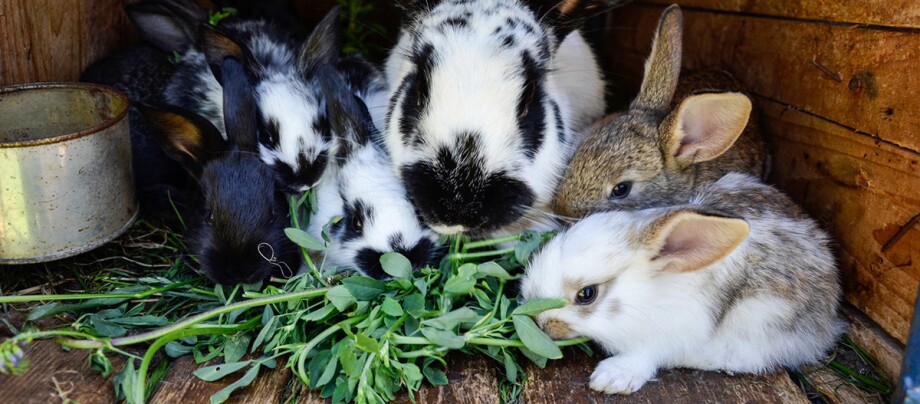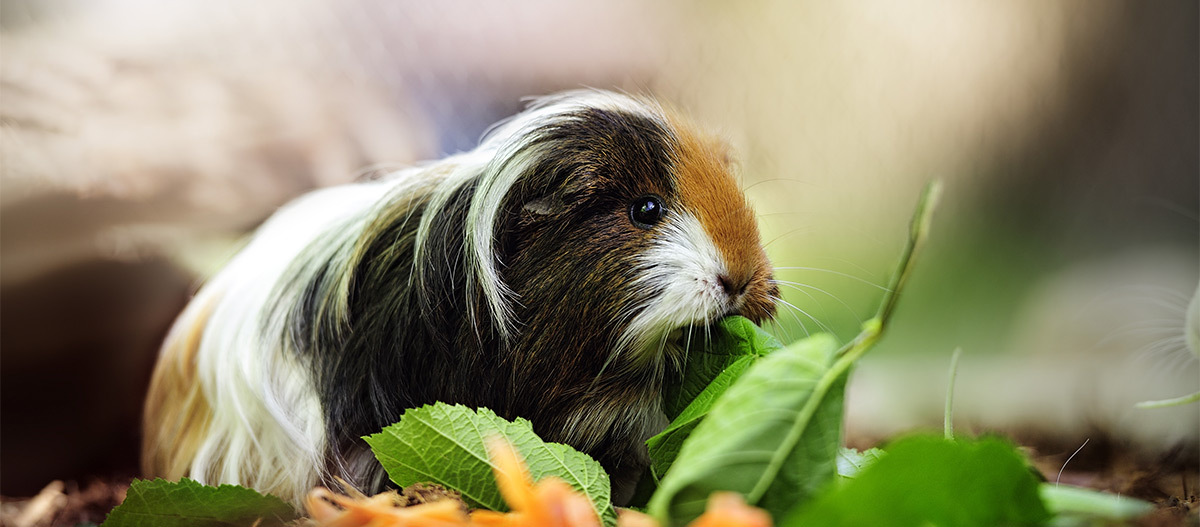Interesting facts about small animals: Which small animals are suitable as pets and how should you care for them?
13.02.2023 - Reading time: 6 minutes

Millions of small animals live as pets in our homes. Rabbits, guinea pigs and hamsters are particularly popular among families with children. Each species has different needs as far as their enclosure and feed is concerned. Hamsters for example, are completely solitary animals, whereas rabbits and guinea pigs are social animals and should never be kept on their own. In former times people often made the mistake of keeping guinea pigs with rabbits as social partners. In reality, these animals have a completely different body language and communication sounds and are not able to understand one another.
Which small animals are suitable as pets?
- Rabbits are particularly popular as pets, especially dwarf rabbits such as Lionhead rabbits, Teddy Dwarf rabbits and Netherland Dwarf rabbits. But bear in mind: Animals with extremely round, short heads have a tendency to have problems with their teeth and rabbits with long, fluffy fur have to be well groomed to prevent their hair from matting. You should inform yourself at a specialist pet shop before choosing a race of rabbit.
- The various races of guinea pig such as Abyssinian guinea pigs or Teddy guinea pigs differ above all in size, colour and type of fur. Long-haired guinea pigs have to be groomed often and their fur must be trimmed once in a while.
Both guinea pigs and rabbits can become tame and some even enjoy being stroked – but there is no guarantee that this will be the case. Both races have strong flight instincts and do not like to be picked up. They are therefore better suited as pets for somewhat older children. - Hamsters are very cute but due to the fact that they are active at dusk and in the night, they are not suitable as pets for small children, who are already in bed before these animals are awake. Mice are sweet and their shyness and skittishness makes them interesting to watch. Fancy rats however, can become very tame, are intelligent, quick to learn and good at interacting with people.
- Chinchillas et Degus and should also never be kept alone. Because these are high maintenance animals, they are not suitable for beginners. They also need a lot of room.
How to keep the various types of small animal
- Rabbits: They should be kept at least in pairs or in groups. A good mix is a castrated buck together with a doe or two castrated bucks together. The more animals you keep, the more space they need: two animals need an area of at least six square metres. Even more space – whether indoors or outdoors – is of course always better, then rabbits need room to hop and zig zag around. The enclosure should be set up with plenty of variety.
Rabbits are very clean animals. It is therefore not unusual for them to learn to use a plastic pet toilet. If this is the case, then there is no problem letting them run free inside the house – poisonous plants and cables that they could chew on should be kept out of their reach. - Guinea pigs: Healthy adult animals can be kept outside the whole year round after they have been acclimatised to it. The enclose with two to four guinea pigs should be at least two square metres in size, for each additional animal it must be extended by 0.5 square metres. Guinea pigs should be kept in pairs at the least and better in small groups. Purely female groups work well as well a harem-style arrangement with a castrated male and several females. The enclosure should be well structured with plenty of variety. In summer these heat-sensitive animals need sufficient shaded areas. Bear in mind with an outdoor enclosure: martens, foxes and birds of prey are all predators, the enclosure must be secure against invaders. Rabbits also like to dig and jump – the enclosure must be escape-proof
- Hamsters: Hamsters are solitary animals and defend their territory vehemently against other hamsters. Golden hamsters and dwarf hamsters are the most common as pets. Even though they are very small, they are immensely active, in the wild they can travel several kilometres a night. The enclosure should be 100 x 50 x 50 cm (L x W x H) in size and have narrowly spaced cage bars so that these midgets can’t squeeze through and escape. Several floors, accessible via ladders or ramps add variety and give the lively animals more space.
The flooring should be covered with a 20 cm thick small-animal litter or hemp litter that is suitable for burrowing, or another absorbent litter mixed with hay and straw. This lets the curious animals dig and build tunnels to their heart’s content without any danger of them collapsing and endangering the animals.
Check list of basic equipment
Rodents and small animals
-
• Small-animal cages, tanks or aviaries (please check minimum recommended size!)
• Fresh hay, species-appropriate food
• Water trough or bowl, robust food bowl (several if there is a group of animals)
• At least one nest box per animal
• Closed hay rack
• Small-animal litter
• Small-animal toilet
• Special cleaning products for small-animal cages
• Tunnels, roots, ramps and similar accessories to keep them entertained
• Material to chew on such as plain, unprinted cardboard (hamsters, mice)
• Sandpit to dig in (hamsters and rabbits)
• Chinchilla sand for bathing in (hamsters)

What do small animals eat?
Small animals and rodents have specific nutritional requirements. Fresh hay should always be available around the clock as the animals always need to nibble. Coarse futter helps wear down the permanently growing teeth and rabbits and guinea pigs also need to eat permanently to ensure their digestion functions properly. Apart from this, fresh food in the form of green fodder or vegetables is suitable for most small animals but they should be got used to it slowly. Fruit should only be given in small amounts as it contains a lot of sugar. Degus, for example, should not eat any fruit at all. Inform yourself extensively beforehand about the animal’s nutritional requirements.
Hygiene and health
Due to the fact that guinea pigs or hamsters in captivity – in comparison to in the wild – live in a relatively
small space, meticulous hygiene is important to ensure that illnesses do not occur. The enclosure should be thoroughly cleaned once a week and the litter completely changed. Food and drink bowls should be rinsed daily with hot water and any leftover fresh food should be removed. Particularly with hamsters it is necessary to search through the enclosure for leftovers as they like to hide their food. Urine and faeces are usually deposited in the same corner of the enclosure and most of the dirty litter here should be exchanged for fresh every day – as hamsters use smell to get their bearings, a small portion of dirty litter should remain in the toilet corner.
If the animals don’t eat properly, it could be due to teeth problems – don’t wait it out, take them to the vet. Diarrhoea is an alarm signal and should not be left untreated.